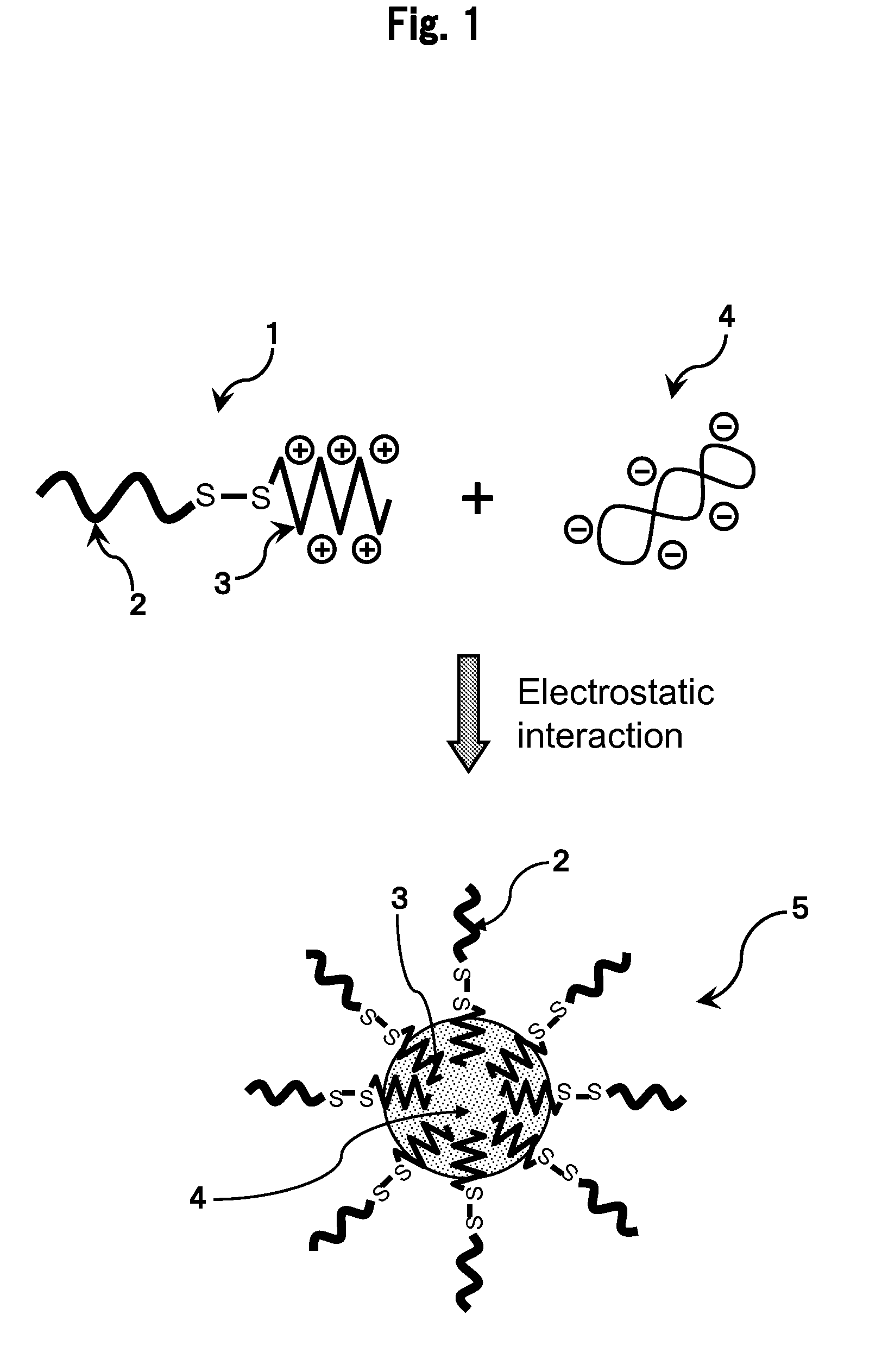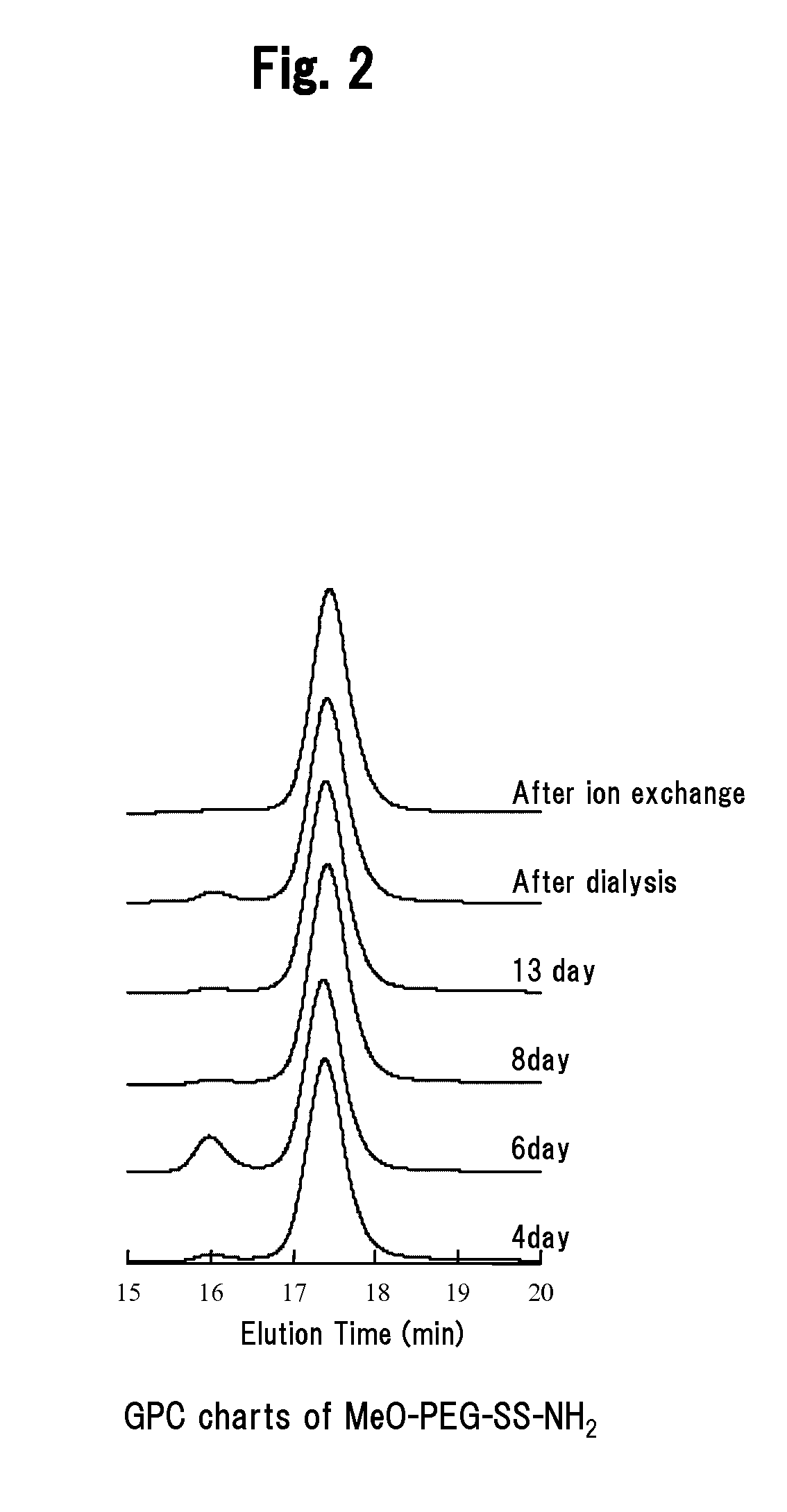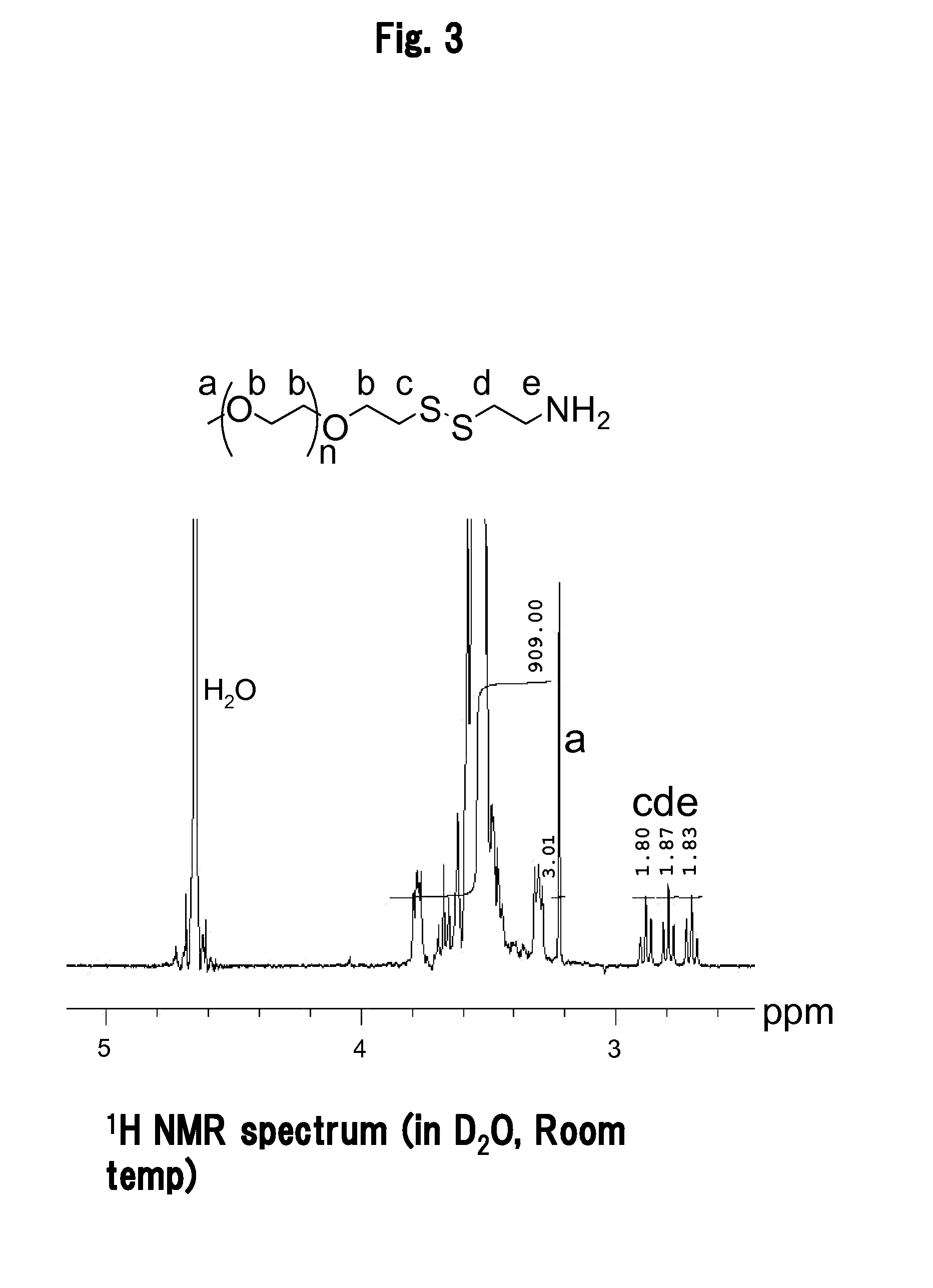Polymer micelle complex including nucleic acid
a technology of polymer micelle and nucleic acid, which is applied in the direction of capsule delivery, biochemistry apparatus and processes, and ingredients of genetic materials, can solve the problems of accompanied virus vectors and risks of side effects, and achieve the effect of gene expression efficiency
- Summary
- Abstract
- Description
- Claims
- Application Information
AI Technical Summary
Benefits of technology
Problems solved by technology
Method used
Image
Examples
example 1
Preparation of Polyion Complex (PIC)
(1) Synthesis of Block Copolymer
[0080]The reaction as shown in the following scheme 1 was carried out to obtain a block copolymer (PEG-SS-P(Asp(DET)) wherein polyethylene glycol binds to polycation via a disulfide bond. Individual reaction steps as shown in scheme 1, namely, the synthesis of PEG-SS-NH2, the synthesis of PEG-SS-PBLA, and the synthesis of PEG-SS-P(Asp(DET)) will be described below.
[0081]
(1-1) Synthesis of PEG-SS-NH2
[0082]PEG-SH (Mn=10,227), a PEG segment formed by introducing a thiol group into one terminus of PEG (polymerization degree (n)=227), was purchased from NOF Corporation.
[0083]1 g of the PEG-SH and 0.77 g of 2-aminoethanethiol (in an amount of 100 times greater) were dissolved in 100 mL of MeOH, and the mixture was then reacted by stirring at room temperature for 13 days (GPC measurement conducted 4, 6, 8, and 13 days after initiation of the stirring). The obtained reaction product was dialyzed to MeOH, and it was then pu...
example 2
Evaluation of Gene Expression Efficiency
[0104]HeLa cells (40,000 cells / well) were inoculated on a 24-well plate, followed by incubation for 24 hours. Subsequently, the PIC comprising “PEG-SS-P(Asp(DET))” obtained in Example 1 was added to the resultant cells in an amount of 1 μg of pDNA per well, and the mixture was then incubated for 24 hours, so as to perform transfection of the HeLa cells with the pDNA. Thereafter, the gene expression level of pDNA was evaluated by luciferase assay (N=4, mean±SE). The gene expression level is obtained in the form of Relative Light Unit (RLU) / mg of protein amount. A case where PIC comprising “PEG-P(Asp(DET)” or PIC comprising “P(Asp(DET))” was used instead of the PIC comprising PEG-SS-P(Asp(DET)) was also evaluated in the same above manner.
[0105]The assay results are shown in FIG. 11. At an N / P ratio of 8 or greater, the gene expression level of the “PIC comprising PEG-SS-P(Asp(DET))” had a higher value than that of the “PIC comprising PEG-P(Asp(D...
PUM
| Property | Measurement | Unit |
|---|---|---|
| particle size | aaaaa | aaaaa |
| pH | aaaaa | aaaaa |
| pH | aaaaa | aaaaa |
Abstract
Description
Claims
Application Information
 Login to View More
Login to View More - R&D
- Intellectual Property
- Life Sciences
- Materials
- Tech Scout
- Unparalleled Data Quality
- Higher Quality Content
- 60% Fewer Hallucinations
Browse by: Latest US Patents, China's latest patents, Technical Efficacy Thesaurus, Application Domain, Technology Topic, Popular Technical Reports.
© 2025 PatSnap. All rights reserved.Legal|Privacy policy|Modern Slavery Act Transparency Statement|Sitemap|About US| Contact US: help@patsnap.com



